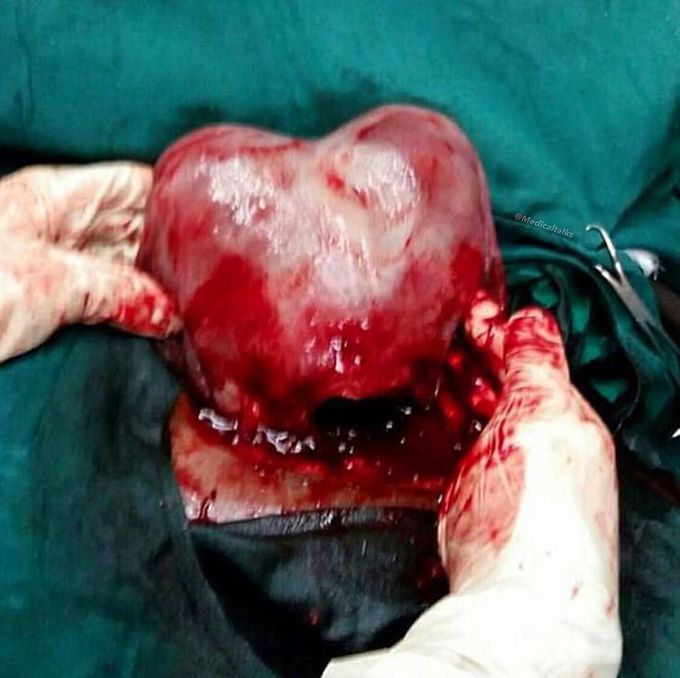


Bicornuate uterus found during a cesarean section!!
Bicornuate uterus is a uterine cavity anomaly that results from incomplete fusion of two uterine horns (Müllerian tubes) leading to varying degrees of separation between the cavities. As a result, the lower part of the uterus is unitary while the upper part is bifurcated. The condition is also called a heart-shaped uterus. In general, the uterus, tubes, and upper vagina develop from the Müllerian ducts in the absence of anti Müllerian hormone. In particular, the fusion of these ducts will form the appropriate structures and their canalizations. Therefore, if fusion failure occurs at the level of the uterus, multiple uterine anomalies may result depending on the quantity of fusion failure. Pregnancies in a bicornuate uterus are considered high risk ones and require extra monitoring because of association with poor reproduction potential. They are associated with recurrent pregnancy loss, malpresentation of the fetus (breech or transverse positions), and preterm birth. It’s questionable whether it is also associated with infertility but recent studies have not confirmed an association. Patients with a bicornuate uterus have good reproductive outcomes, but they might require a reconstructive intervention called metroplasty which is done by hysteroscopy (access to the uterine cavity with an endoscope). Photo by @k_ab23
I have a heart shaped uterus. I have had two miscarried pregnancies. My daughter was successfully born at 38 weeks with a cleft lip. The only complication was my placenta breaking into pieces after delivery. Doctors then found out that it was heart shaped with an ultrasound and feeling the uterine wall.
Hemodynamic stimuli&nonhemodynamic stimuliEffects of sugar on teeth


